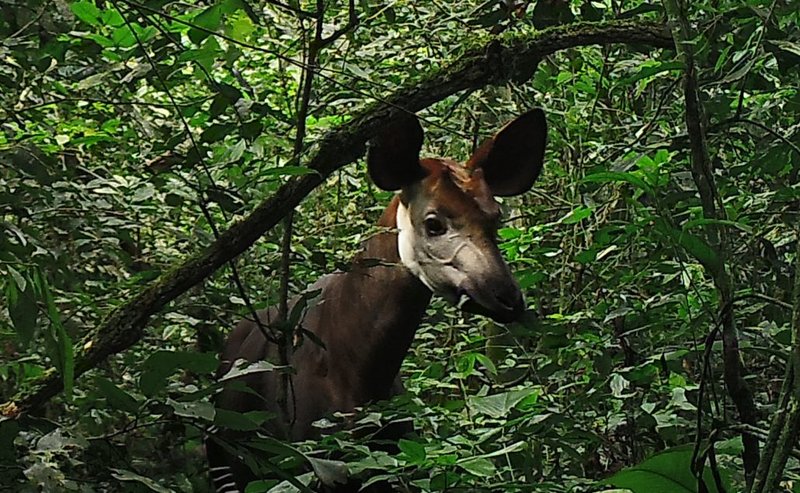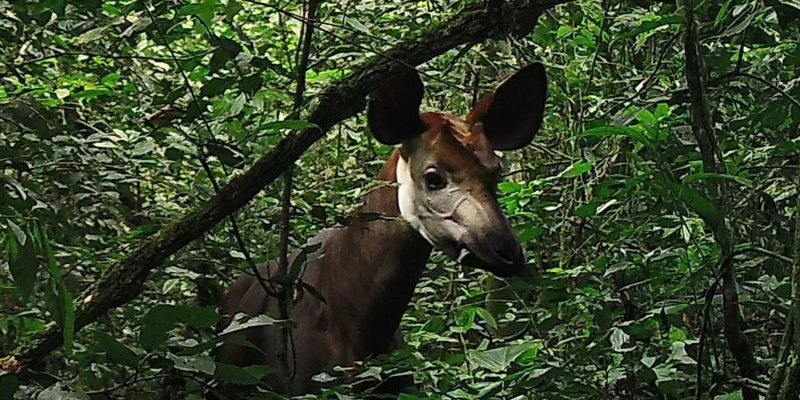
You might be wondering why it’s essential to have a plan for such a rare encounter. Well, understanding how to approach wildlife safely ensures both your safety and the well-being of the animal. Just like you wouldn’t rush up to a bear or an elephant, you shouldn’t approach an okapi without knowing what to do. Let’s dive into some helpful steps to take and tips to keep in mind!
Understanding the Okapi
The okapi is a fascinating animal that not many people know about. With its long neck and striped legs, it resembles a blend of different species. Here’s the thing: it’s actually more closely related to giraffes than zebras, even though its appearance might suggest otherwise. Okapis are generally shy and solitary creatures, which makes spotting one in the wild quite a special occasion.
Despite their unique looks, okapis are excellent at hiding in their natural habitat. They live in thick, tropical forests, using their natural camouflage to stay out of the sight of both predators and humans. Their coat has a velvety texture with rich browns and whites, allowing them to blend seamlessly into the dappled light of the forest. Understanding these traits helps you appreciate the wonder of seeing an okapi in the wild.
Now, you might ask, “What are they doing in the wild?” Okapis are herbivores, feeding mainly on leaves, fruits, and plants within their habitat. Because they are browsers rather than grazers, they tend to stay in areas with abundant foliage. Knowing this can help you identify where to look if you’re hoping to spot one.
Stay Calm and Observe
If you find yourself face-to-face with an okapi, the first step is to stay calm. Animals can pick up on our energy, and panicking might make the situation worse. Instead, take a deep breath and appreciate the moment. This is not a common sight!
Next, try to observe the okapi from a distance. Using binoculars can give you a closer look without intruding on its space. Respect the animal’s environment; okapis are not used to human interaction and can become stressed if approached too closely. Watching from afar lets you enjoy the experience while ensuring the animal feels safe.
You might be wondering how long to stay in one spot. Generally, it’s best to limit your time watching to about 10-15 minutes. This gives you enough time to observe without overstaying your welcome. Remember, you’re a guest in their home!
Know When to Move Away
While it’s exciting to see an okapi, there are times when it’s best to back off. If the okapi seems agitated or starts to walk away, it’s a clear sign that you should follow suit. Animals communicate their discomfort, much like we do, and respecting those signals is crucial for a good experience.
If the okapi starts displaying signs of distress—like stamping its feet, raising its head, or making unusual sounds—it’s time to give it space. These signals indicate that it feels threatened, and you don’t want to escalate the situation. It’s all about maintaining a peaceful atmosphere, both for you and the animal.
You can also create distance by quietly moving in the opposite direction. This not only reassures the okapi but also keeps you safe. It’s important to leave the area as undisturbed as possible so that the animal can go back to its normal behavior.
Document the Experience Respectfully
If you’re an avid wildlife photographer or just want to capture the moment, make sure you do so respectfully. Using a zoom lens is ideal, allowing you to get great photos without intruding on the okapi’s space. Remember, your goal is to observe, not to disturb.
Here are a few tips for documenting your encounter:
- Don’t use flash: Flash can startle wildlife, so avoid it altogether.
- Be patient: Wait for the right moment instead of chasing the animal.
- Limit your clicks: Take only a few shots to minimize disturbance.
Documenting your experience can help raise awareness about okapis and the need to preserve their habitat. Every photo tells a story, but it’s important that your story doesn’t come at the cost of the animal’s comfort.
Enjoy the Moment of Connection
Encounters with wildlife can be transformative experiences. Honestly, just seeing an okapi in its natural habitat is a reminder of how incredible our planet is and the diversity of creatures that inhabit it. Take a moment to appreciate the connection you have with nature and the opportunity to witness such a rare animal.
Consider reflecting on how you can contribute to wildlife conservation. Understanding the challenges okapis face—like habitat loss due to deforestation—can inspire you to support conservation efforts. Every little bit helps, whether it’s through donating, volunteering, or spreading awareness.
You might also want to share your experience with friends or on social media. Stories about unique wildlife encounters can spark interest in protecting these magnificent animals. Just remember to emphasize the importance of respecting their space!
Know the Local Regulations
Before venturing into areas where okapis are known to roam, it’s essential to know the local regulations regarding wildlife encounters. Many regions have specific rules about how to interact with or observe wildlife. Following these guidelines not only keeps you safe but also helps protect the animals.
For instance, some parks or reserves may have strict rules about how close you can get to wildlife. Learn about the local laws and be sure to follow them. This is especially important for species that are endangered or threatened, like the okapi.
Additionally, consider hiring a local guide who knows the area and its wildlife. They can provide insights about the okapi and ensure that you have a safe and respectful experience.
Final Thoughts on Okapi Encounters
Encountering an okapi in the wild is a rare and special experience. Remember to stay calm, observe from a distance, and respect the animal’s space. With these tips, you’ll not only have a memorable moment but also contribute positively to wildlife conservation.
Each time we encounter wildlife, we have a choice to respect their home and their existence. So next time you find yourself in the rainforest, keep an eye out for these unique creatures. Your respect for nature can help protect them for generations to come!

